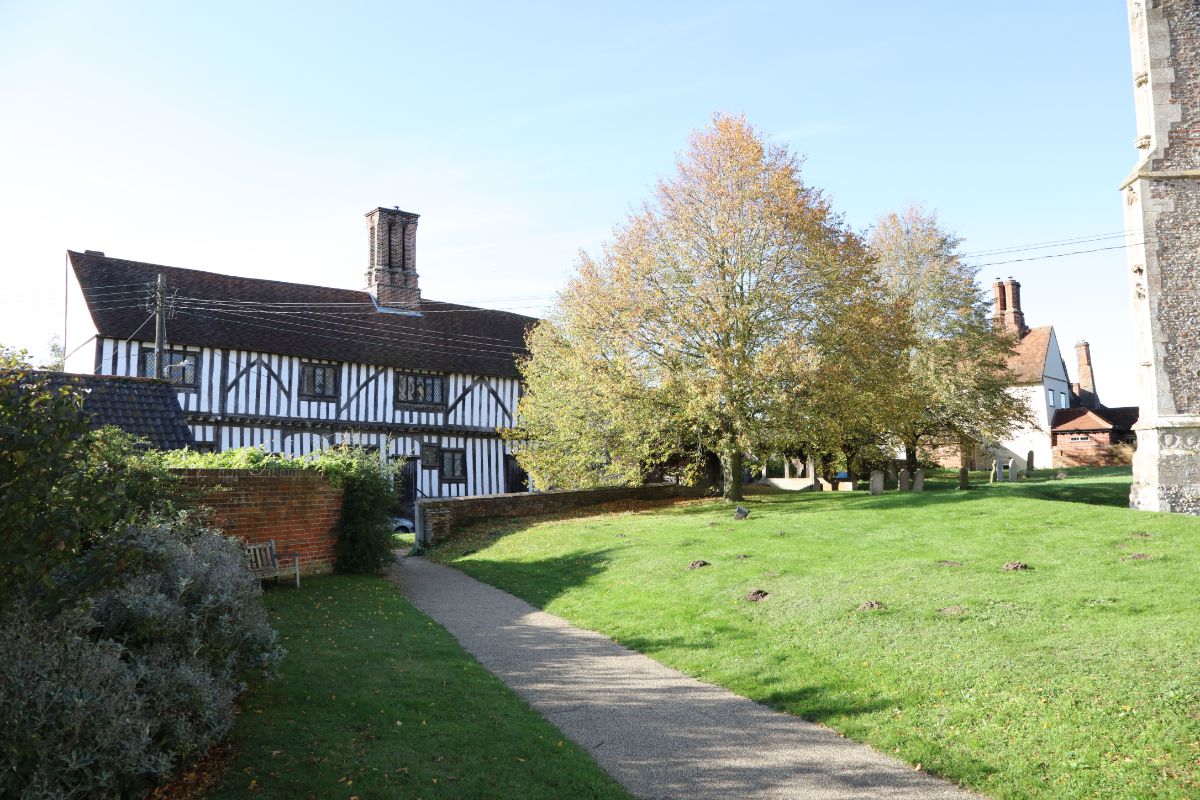The Parish Council usually meets on the second Tuesday of every other month at 19:30h in the Village Hall. The Planning Committee meets every month on the second Tuesday at 19:00h. The public are very welcome to attend. Details of meetings are published on the Parish Notice board outside the Village Hall. The names and telephone numbers of all parish councillors & the Clerk to the Council are listed in the Community News & website.
As featured in the 1868 National Gazetteer of Great Britain - volume 10:
STOKE-BY-NAYLAND, a parish in the hundred of Babergh, county Suffolk, 1½ mile N.E. of Nayland, and 5 miles E. of Bures railway station. Colchester is its post town. The village, which was formerly a market town, is situated near the river Stour. The parish contains the chapelry of Leavenheath, and had a monastery endowed by the Saxon Earl of Algar, traces of which are still existing. The living is a vicarage in the diocese of Ely, value £278. The church, dedicated to St. Mary, is an ancient structure, with a tower and six bells. There is also a district church at Leavenheath, the living of which is a perpetual curacy, value £56. The parochial charities produce about £25 per annum, exclusive of some almshouses. £8 go towards Lady Windsor's hospital. There is a National school for both sexes. Tendring Hall is the principal residence.
Stoke by Nayland has a number of organisations
that are active within the community:
Parish Council Information
Stoke by Nayland through the ages
946 AD
Earliest Record
The village is first recorded in the will of Ælfgar, an Earl, where he endowed land to a community in the village, possibly a monastery
1350
The Church of St Mary
The iconic Church of St Mary was constructed in the 14th century, notable for its impressive tower and flint architecture. This church has been a focal point of the community and stands as a testament to mediaeval craftsmanship.
1525
Wool and Textiles Trade
During the Tudor period, Stoke-by-Nayland prospered from the wool and textiles trade. The village's economy thrived, leading to the growth of local wealth and the construction of several large, beautiful timber-framed houses that still stand today.
1618
Charity
Almshouses founded in the village by Lady Ann Windsor, which continues to provide housing to this day
19th Century
Agricultural Development
The 19th century saw significant agricultural development in Stoke by Nayland, reflecting the broader changes in farming practices across England. The introduction of new crops and farming techniques helped sustain the village's economy.
1955
Change to the village Boundary
Boundary with Polstead moved north
Present Day
A Vibrant Community
Today, Stoke by Nayland is known for its vibrant community, picturesque landscapes, and rich history. It boasts a blend of historic sites, modern amenities, and a thriving tourism industry. The village continues to celebrate its heritage whilst embracing the dynamics of contemporary life.
Stoke by Nayland through the season

The Church
The Parish Church of St Mary’s is one of five parishes, which includes – Leavenheath, Nayland, Polstead and Wiston. Times of services are posted in the Community News and in the south porch of the Church.

Park Street
The village amenities comprise a Shop and Post Office, two Public Houses, a garage and a bookshop all to be found on Park Street.

Pubs
Our two remaining Pubs are found opposite each other in Park Street. The Angel for fine dining and the Crown for a gastro pub experience. Both have lovely gardens.

River Walks
With the River Stour running to the west of the village at Tendring Hall farm there are some wonderful walks along the river at Nayland and along the stretch at Higham.

Local Walks
There is an extensive network of Public Footpaths linking villages and hamlets throughout the Parish with some wonderful walks including St Edmunds Way - a long-distance path connecting Manningtree to Brandon following parts of the Stour Valley Path, crossing much of Suffolk.
Church Views
Stoke church can be seen from all aspects of the compass, it has a 360° view from anywhere in the locality and is therefore a prominent local landmark and guide to navigation.

Activities
The Village Hall is home to a number of activities: The 100 Club, Monthly Village Lunch, Coffee Mornings, Local History Society meetings, Pilates, Singing Group, Bingo , various Annual Meetings. The Parish Council meet here on a bi-monthly basis.

Annual Events
The Spring Fair is a bi-annual event raising funds for a number of village causes including maintenance of St Mary’s Church. National events are celebrated both on the Village Green and on the Recreation Ground’, such as the Annual Firework Display.

Church Activities
There are regular events held in the church beyond worship, with a children's play area and the Art Show being just two.

Local Artists
As part of the Dedham Vale Stour Valley AONB, made famous by artists such as John Constable, Alfred Munnings and Thomas Gainsborough, our landscapes continue to attract local artists.

Stoke in Winter
The village becomes a wonderful sight when covered in snow and is particularly picturesque. Our roads and lanes are gritted so do come enjoy this scene of winter wonderment.

Christmas
As shown above, there is a very jolly Carol Concert held on the village green every year!